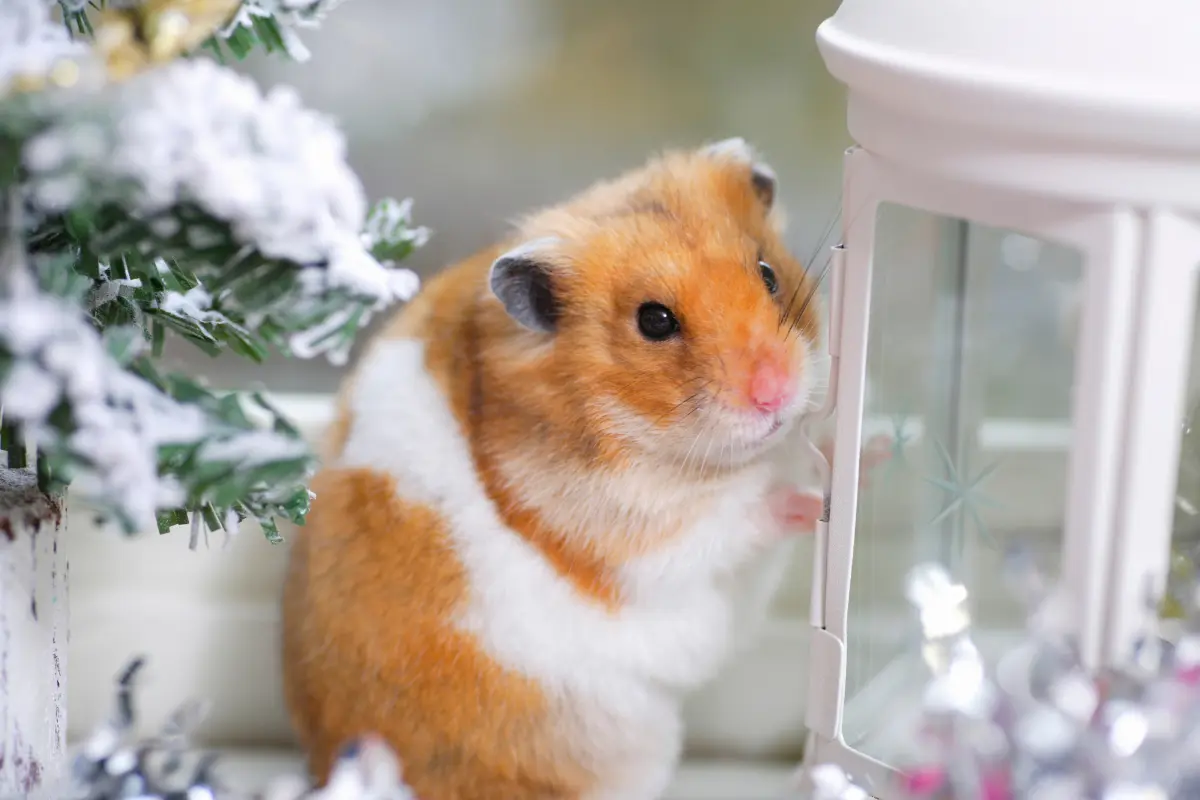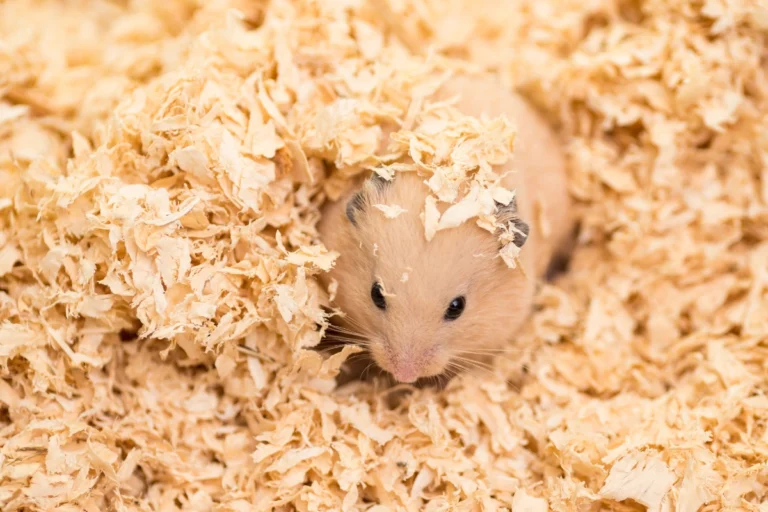How to Protect Your Hamster from the Cold: Winter Warmth Tips
As the colder months roll in, it’s essential to take extra care of your hamster. Hamsters, like many small pets, are highly sensitive to temperature fluctuations. When their body temperature drops too low, they can enter a state similar to hibernation.
Fortunately, there are several practical ways you can keep your hamster cozy and comfortable throughout the winter months.
1. Keep Your Hamster’s Cage in a Warm Area
One of the most important factors in keeping your hamster warm is the location of their cage. Hamsters thrive in temperatures between 65°F and 75°F (18°C to 24°C), which is generally considered room temperature.
If the room where the cage is placed gets too cold, it can put your hamster at risk of hibernation or even hypothermia.
Ideal Cage Placement:
- Avoid Drafts: Keep the cage away from windows, doors, or vents that may let in cold air. Drafts are one of the leading causes of chills and discomfort for small animals.
- Stay Away from the Floor: It’s a good idea to raise your hamster’s cage off the floor, as floors tend to be colder, especially in winter. A stand or a table can help keep the cage at a more consistent temperature.
- Close to Heating Sources (But Not Too Close): Placing the cage near a radiator, space heater, or heating vent can provide warmth, but be cautious. Make sure the cage isn’t directly exposed to heat, as this can create a dangerous temperature fluctuation. The warmth should be indirect.
2. Use a Heating Pad to Provide Extra Warmth
If the temperature in your home drops significantly, a reptile heating pad can be a useful tool to help keep your hamster warm. Reptile heating pads are primarily designed to provide heat for reptile enclosures, but they can also be an effective way to regulate the temperature of your hamster’s cage in winter.
The benefit of using a heating pad is that it provides localized heat, directly warming the area where your hamster sleeps or spends time. This mimics the warm burrow environment that hamsters would naturally seek in the wild during colder months.
However, it’s important to use the heating pad cautiously. Place it on one side of the cage, not covering the entire enclosure. This allows your hamster to choose whether to stay on the warmer side or move to the cooler side of the cage, depending on how they feel.
Make sure the pad is not hot enough to burn your hamster, and check the temperature frequently to avoid overheating.
3. Add Extra Bedding for Insulation
Hamsters are burrowing animals, and they naturally seek out cozy spaces to stay warm. You can help them stay snug by adding extra bedding to their cage. Choose bedding materials that are absorbent and provide good insulation. Some good options include:
- Paper-based Bedding: Soft and warm, paper bedding (like Carefresh) can be stacked up to create a deeper bedding layer. This helps your hamster burrow for warmth.
- Aspen Shavings: These are also a good option, as they are soft and comfortable for burrowing.
- Hay: Fresh hay is excellent for insulation and gives your hamster something to nibble on.
- Avoid Cedar or Pine Shavings: These can be harsh for your hamster’s respiratory system, especially during the winter when they are more vulnerable.
You can also use a fleece or cotton hammock in the cage for your hamster to snuggle into when it gets chilly.
4. Block Drafts with Blankets or Insulating Materials
Another simple yet effective way to keep your hamster warm is to insulate their cage from the surrounding cold air. If the cage is against a wall, you can place a blanket or towel between the wall and the cage to trap heat. This simple barrier helps to prevent cold air from seeping in from the back of the cage, creating a warmer environment.
Additionally, if your hamster’s cage is on the floor or on a surface near a drafty area, placing a blanket underneath the cage can further trap warmth.
However, if the room temperature is consistently around 60°F (15°C) or lower, a blanket alone may not be enough to maintain a safe temperature. In such cases, combining this method with other heat sources, such as a heating pad or proper room insulation, is crucial to ensuring your hamster’s well-being.
5. Provide a Warm Hideout
Every hamster needs a quiet, secluded space where they can feel safe and secure. During the winter, this hideout becomes even more important. Consider providing a “winter den” for your hamster—a small, enclosed space that they can retreat into when the temperature drops.
Some options for warm hideouts include:
- A Small Wooden House or Den: A wooden hideout can naturally help insulate your hamster’s body heat. It’s also a great way to give your hamster some privacy.
- A Soft, Fleece-lined Nest: You can buy or make a soft, fleece-lined nest for your hamster to curl up in. Ensure the hideout is small enough to keep the warmth in but large enough for your hamster to move around comfortably.
- Clay or Ceramic Nests: These materials retain warmth and can help keep your hamster cozy during cold nights. However, make sure the nest has enough ventilation so that your hamster doesn’t overheat.
6. Avoid Using Heating Pads or Hot Water Bottles Directly
While it might be tempting to use heating pads or hot water bottles to provide warmth to your hamster’s cage, these methods can pose significant risks if not used properly. Direct heat sources can create dangerous hot spots, which may burn or harm your hamster. Here’s why these options should be used cautiously:
The Risk of Direct Heat Exposure:
- Burns and Injury: Heating pads and hot water bottles can generate intense heat that may be too much for your hamster’s sensitive skin, especially if they come into direct contact with the heat source. Hamsters do not have the same ability to move away from hot areas as larger pets do, so they are more vulnerable to burns.
- Overheating: Hamsters need to regulate their body temperature, and an excessive heat source can quickly cause them to overheat, leading to distress or even heatstroke. Overheating can be just as dangerous as being too cold.
Proper Use of Heating Pads:
If you decide to use a heating pad, make sure it is designed specifically for pets. These pet-safe heating pads have low wattage and are built to provide a gentle, consistent heat rather than intense heat.
- Placement: Place the heating pad under the cage rather than inside. This allows heat to radiate up gently without directly touching your hamster. Never place it inside the cage, as direct contact can cause burns.
- Temperature Control: Many heating pads come with adjustable thermostats to ensure the temperature stays safe for your pet. The goal is to create a warm zone in one part of the cage, giving your hamster the choice of moving toward or away from the heat.
- Monitor Carefully: Even with pet-specific heating pads, it’s important to check the temperature regularly to ensure it stays within the ideal range (around 75°F to 80°F, or 24°C to 27°C). Make sure the heat source is not so strong that it creates an uncomfortable or dangerous environment.
Avoid Hot Water Bottles:
Hot water bottles are another common method for heating but should be avoided for similar reasons. If they leak, or if your hamster accidentally presses against a hot water bottle, they could suffer burns. The water inside the bottle can also cool quickly, leading to fluctuating temperatures that can stress your hamster.
Regularly check how your hamster is reacting to the added heat. If they seem to be avoiding certain areas or showing signs of heat stress, such as panting or lethargy, adjust the heating pad or remove it temporarily to avoid overheating.
Lastly, don’t forget that while winter can be a challenging time, it’s also an opportunity to strengthen the bond between you and your hamster by providing them with extra care and attention. With a little effort and observation, you can ensure your hamster stays cozy and content throughout the winter season.






